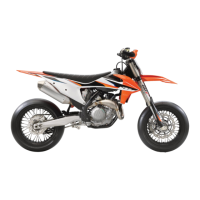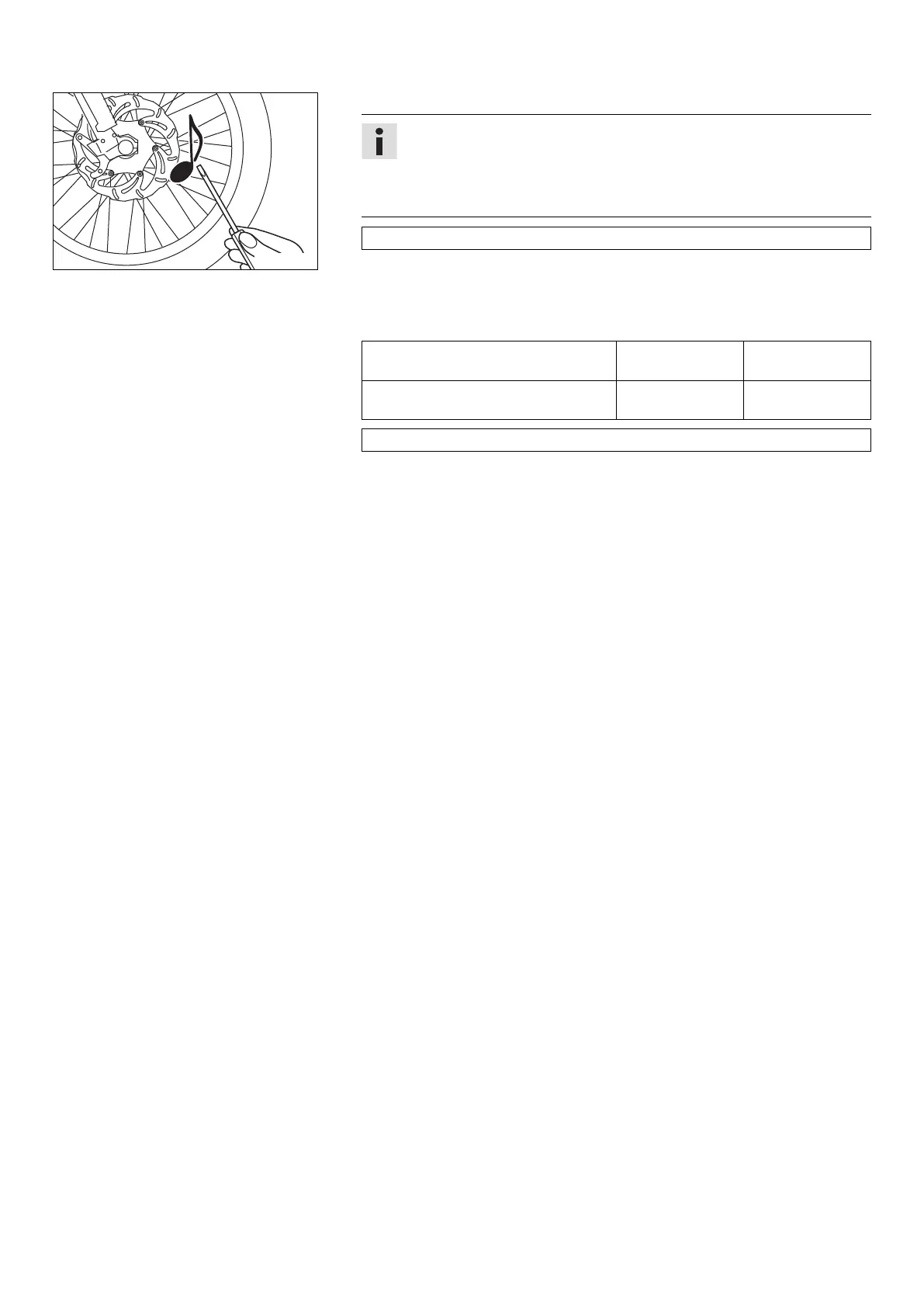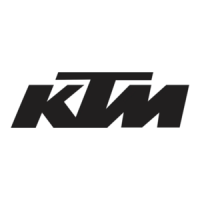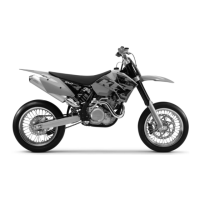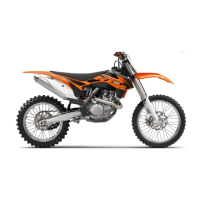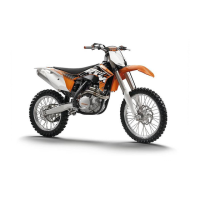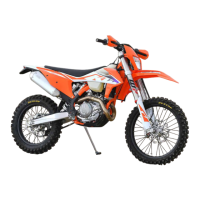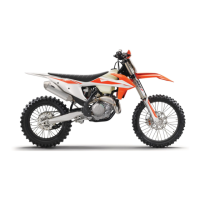13 WHEELS, TIRES 64
400694-01
– Briefly strike each spoke with the tip of a screwdriver.
Info
The tone frequency depends on the length of the spoke and the spoke diam-
eter.
If you hear different tone frequencies from different spokes of equal length
and diameter, this is an indication of different spoke tensions.
You should hear a high note.
» If the spoke tension varies:
–
Correct the spoke tension. x
– Check the spoke torque.
Guideline
Spoke nipple, front wheel M4.5 5… 6 Nm (3.7…
4.4 lbf ft)
Spoke nipple, rear wheel M4.5 5… 6 Nm (3.7…
4.4 lbf ft)
Torque wrench with various accessories in set (58429094000)
